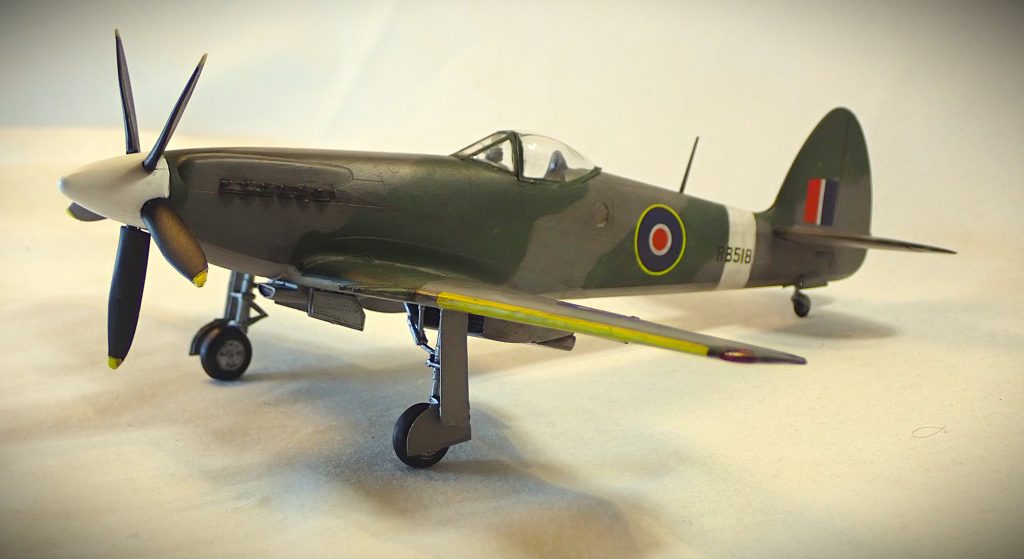In 1942 Supermarine were tasked by the Air Ministry to develop a new wing for the Spitfire for the sole purpose of increasing the height, speed and rolling characteristics to include a laminar flow cross section. Joseph Smith began designing the new wing with the assistance of the National Physical Laboratory at Teddington. The drag on the elliptical wing reduced performance at speeds more than 480mph meaning the wing needed a smaller area and thicker skin giving improved aileron control at high speeds. The landing gear was redesigned to fold inwards widening the wheels, therefore eliminating the landing and take-off instability issue.
The Air Ministry issued a Specification for a single seat fighter with laminar flow wings, improved visibility, folding wings, contra-rotating propellers and four 20mm cannon for armament and the fuselage of the Spitfire Mk.VIII. Three prototypes were ordered as test beds, two with Griffon and one with a Merlin powerplant, with one having the contra-rotating propeller for testing. The new Type 371 wing was eventually fitted to a Spitfire Mk.XIV modified to fit the new wing with its maiden flight scheduled for March 1944. Due to delays in the new wing the first prototype, NN660, did not fly until September 1944 but crashed killing the test pilot. Suspected aileron failure was the cause. The second flew in January 1945 with enlarged tailplane, fin and rudder to improve handling. It was found to be faster than the Spitfire but not as fast as had been intended.
The Type 371 renamed the Spiteful Mk.XIV went into production with a five bladed Rotol propeller and Rolls-Royce Griffon 69 V-12 engine retaining the numerals for Merlin production which never happened. Armament was fixed at 4 Hispano Mk.V cannon and hard points for up to 12 RP-3 rockets or 2 x 1,000lb bombs. An order for 650 was placed but reduced by 260 almost immediately. A further reduction left only 80 on order. The final reduction left the order standing at 22. The first production aircraft flew in April 1945. However, with the end of the war imminent and the advent of the jet fighter, the order was cancelled in May 1945. Only 16 had been completed by this time. Three of these were sent to Boscombe Down for trials while the rest were taken “on charge” by the RAF but very few ever flew. After subsequent testing it was found to be only marginally improved on the latest production Spitfire Mk.XVI. Plans to use it as a fighter/bomber were put forward but Supermarine refused and the project was abandoned with the remaining Spiteful airframes being sold for scrap in 1948.
Post war versions of the Spitfire and Seafire continued, despite the known issues, with greater improvements. Peak performance was reached before the jet age fully replaced the piston engine. The Spiteful was never going to supersede its more mature cousin.
The wing, however, was not abandoned and went on to form the basis of the Supermarine Attacker jet fighter as we shall see. None of the 19 Spiteful built survived.
